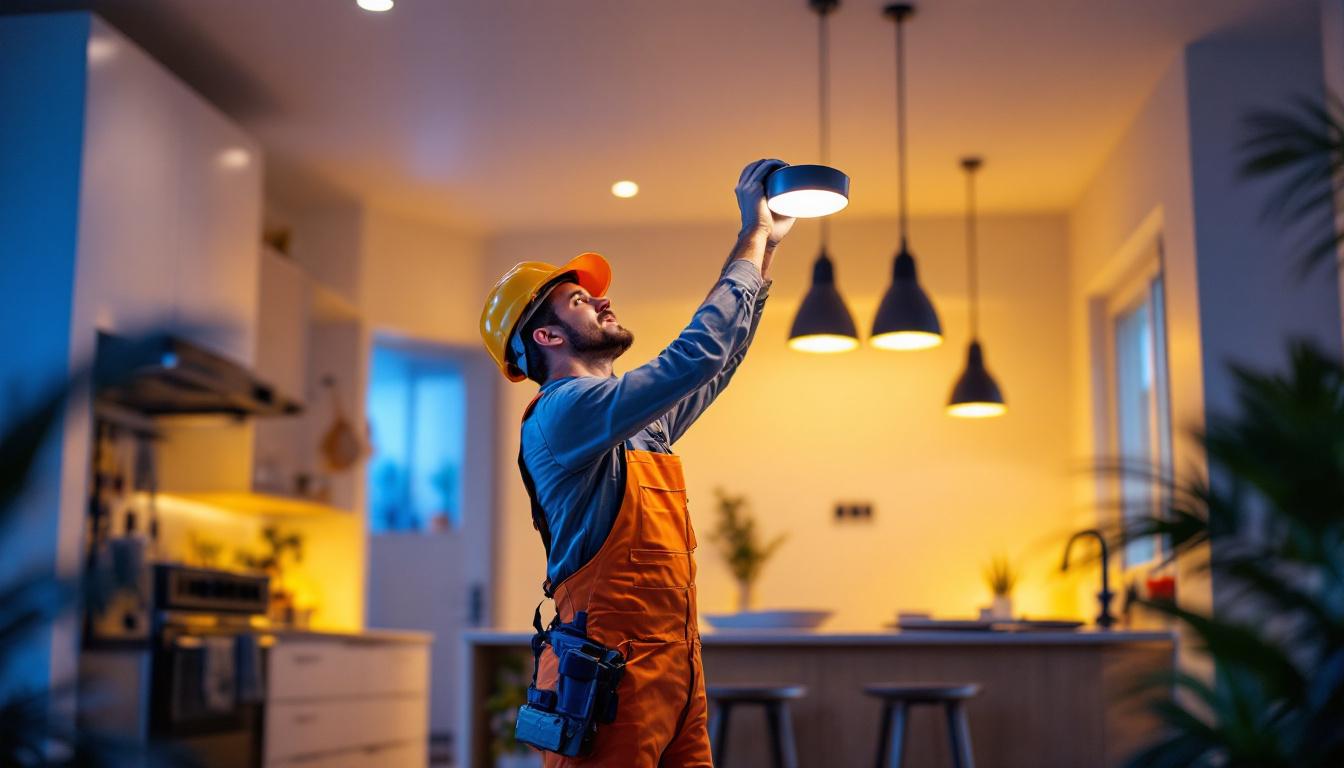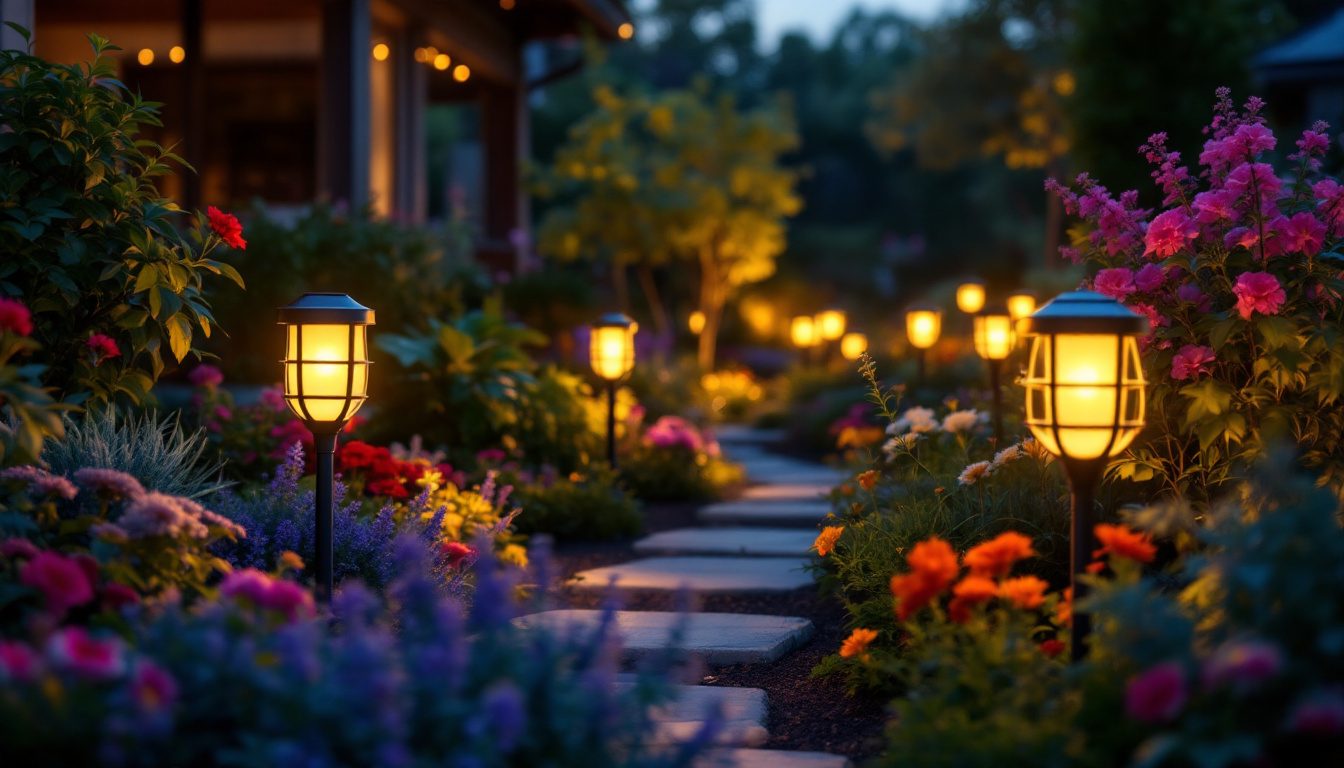
As the demand for energy-efficient lighting solutions continues to rise, LED lights made in the USA are becoming increasingly popular among contractors and clients alike. With advancements in technology and a growing emphasis on sustainability, understanding the latest trends in LED lighting is essential for any lighting contractor. This article delves into the significant trends shaping the LED lighting landscape, focusing on the unique advantages of domestically manufactured products.
Energy efficiency is at the forefront of the lighting industry, and LED lights are leading the charge. Contractors are increasingly recommending LED solutions due to their lower energy consumption compared to traditional lighting options. This shift not only helps clients save on energy bills but also contributes to a reduced carbon footprint. The transition to energy-efficient lighting is not just a trend; it represents a significant cultural shift towards sustainability, as consumers and businesses alike become more aware of their environmental impact.
One of the standout features of LED lights is their impressive lifespan. Unlike incandescent or fluorescent bulbs, which may need frequent replacement, LEDs can last up to 25,000 hours or more. This durability translates to lower maintenance costs for clients, making LED lights a more attractive option for both residential and commercial projects. The longevity of LEDs means that businesses can allocate their resources more effectively, reducing the time and money spent on lighting maintenance and replacements.
Furthermore, LEDs are less prone to breakage, as they are constructed with solid-state technology. This resilience is particularly beneficial in high-traffic areas or environments where traditional bulbs might be vulnerable to damage. For instance, in industrial settings or outdoor spaces, the ability of LED lights to withstand harsh conditions—such as extreme temperatures and humidity—ensures they continue to perform optimally, providing consistent illumination without frequent interruptions.
Many regions offer incentives for adopting energy-efficient lighting solutions, including rebates for installing LED systems. These financial benefits can significantly offset initial installation costs, making it easier for contractors to persuade clients to make the switch. Staying informed about local and federal incentives can enhance a contractor’s value proposition and help clients maximize their savings. Additionally, as governments worldwide push for greener initiatives, the availability of such incentives is likely to increase, further encouraging the adoption of LED technology.
Moreover, these incentives often extend beyond simple rebates; some programs may include tax credits or grants aimed at promoting energy efficiency. This multifaceted approach not only supports the financial aspect of transitioning to LED lighting but also fosters a broader commitment to sustainability within communities. As more businesses and homeowners take advantage of these incentives, the collective impact on energy consumption and environmental preservation becomes increasingly significant, paving the way for a greener future.
As the market for LED lighting continues to expand, so too does the variety of designs and customization options available. Contractors are now able to offer clients a range of styles that suit various aesthetics and functional needs. This evolution in design not only caters to the preferences of individual clients but also allows for unique solutions that can transform spaces into personalized environments. With the ability to customize color temperatures, brightness levels, and even the shape of fixtures, the possibilities are virtually limitless.
Architectural lighting has evolved significantly, with LED technology allowing for more creative and versatile designs. From accent lighting to integrated fixtures, LEDs can be seamlessly incorporated into architectural elements, enhancing the overall visual appeal of a space. For example, cove lighting can be used to create a soft glow that highlights ceiling lines, while wall washers can bring texture and depth to surfaces. Contractors should familiarize themselves with the latest architectural trends to provide clients with innovative solutions that elevate their projects. Keeping abreast of emerging technologies, such as tunable white lighting, can also offer clients the ability to adjust the ambiance of a space according to different times of day or activities, further enhancing the functionality of their environments.
Smart lighting systems are gaining traction, allowing clients to control their lighting through mobile apps or home automation systems. These systems often incorporate LED technology, providing both energy efficiency and convenience. With features like scheduling, remote access, and voice control, smart lighting can significantly enhance the user experience. Contractors should consider offering smart lighting options as part of their services, as they can enhance user experience and appeal to tech-savvy clients. Additionally, the integration of smart lighting with other smart home devices, such as security systems and thermostats, can create a cohesive and efficient living environment. This interconnectedness not only simplifies daily routines but also adds an extra layer of security and energy management, making it an attractive selling point for potential clients.
With growing awareness of environmental issues, sustainability has become a key consideration for many clients. LED lights made in the USA often emphasize eco-friendly manufacturing processes, which can be a selling point for contractors.
Choosing LED lights made in the USA not only supports local economies but also reduces the carbon footprint associated with transportation. By sourcing products domestically, contractors can appeal to clients who prioritize sustainability and ethical practices in their purchasing decisions.
Moreover, many American manufacturers are committed to using recyclable materials and sustainable production methods, further enhancing the environmental benefits of their products. This commitment to sustainability can be a significant differentiator in a competitive market.
As LED lights become more prevalent, the need for proper disposal and recycling programs is also increasing. Contractors should educate clients about the importance of recycling old lighting products and provide information on local recycling programs. Many manufacturers offer take-back programs for their products, ensuring that clients can dispose of their old lights responsibly.
Technological innovations are continually enhancing the performance and capabilities of LED lights. Staying updated on these advancements is crucial for contractors looking to provide the best solutions for their clients.
One of the most significant advancements in LED technology is the improvement in color rendering. High-quality LEDs now offer a Color Rendering Index (CRI) that rivals traditional lighting sources, allowing for more accurate and vibrant color representation. This is particularly important in settings such as retail spaces, galleries, and homes where color accuracy is essential.
Modern LED systems often come equipped with advanced control features, including dimming capabilities and tunable white light. These features allow clients to customize their lighting environments based on their preferences and activities. Contractors should be well-versed in these technologies to offer tailored solutions that meet specific client needs.
Understanding market trends and consumer preferences can significantly impact a contractor’s success. As LED lighting continues to dominate the market, contractors must adapt to changing demands and expectations.
Clients are increasingly seeking lighting solutions that not only serve a functional purpose but also enhance the aesthetic appeal of their spaces. LED lights offer a wide range of design options, from sleek and modern fixtures to vintage-inspired designs. Contractors should be prepared to showcase a variety of styles to cater to diverse client tastes.
There is a growing awareness of the impact of lighting on health and well-being. Research has shown that the right lighting can improve mood, productivity, and overall well-being. Contractors should consider this aspect when recommending LED solutions, emphasizing features such as adjustable color temperatures that can mimic natural light and promote a healthier indoor environment.
While the benefits of LED lights are substantial, contractors should also be aware of potential challenges and considerations when working with these products.
Although LED lights can save money in the long run, the initial investment can be a barrier for some clients. Contractors must be prepared to explain the long-term savings associated with energy efficiency and reduced maintenance costs. Providing detailed cost-benefit analyses can help clients understand the value of investing in LED lighting.
When retrofitting existing lighting systems with LEDs, compatibility can sometimes pose challenges. Contractors should assess the current infrastructure and ensure that new LED products can integrate seamlessly with existing fixtures and controls. This may involve additional planning and adjustments, but it is crucial for a successful installation.
The future of LED lighting in the USA looks promising, with continued advancements in technology and a growing emphasis on sustainability. As more contractors embrace LED solutions, the market is likely to expand further, providing new opportunities for innovation and growth.
Emerging technologies, such as organic LEDs (OLEDs) and advancements in smart lighting, will continue to shape the industry. Contractors should stay informed about these developments to remain competitive and offer cutting-edge solutions to their clients.
Building strong relationships with manufacturers of LED lights made in the USA can provide contractors with valuable insights into product developments and industry trends. Collaborating with manufacturers can also lead to exclusive opportunities, such as early access to new products or training on the latest technologies.
As the lighting industry evolves, staying informed about the latest trends in LED lights made in the USA is essential for contractors. From energy efficiency and innovative designs to sustainability and technological advancements, understanding these trends can help contractors provide better solutions for their clients. By embracing these changes and adapting to the market’s demands, lighting contractors can position themselves as leaders in the industry, ensuring their success in an ever-changing landscape.
Ready to lead the way in the ever-evolving lighting industry? At LumenWholesale, we provide lighting contractors with the highest quality LED lights made in the USA, tailored to the latest trends and client needs. Our spec-grade lighting products come at unbeatable wholesale prices, giving you the competitive edge you need. Say goodbye to inflated markups and hello to a vast selection of reliable, high-performance lighting solutions. Plus, with free shipping on bulk orders, you can stock up on premium lighting at the best value — without any hidden fees. Elevate your lighting game and ensure the success of your projects with Wholesale Lighting at the Best Value from LumenWholesale.

Discover essential tips from lighting contractors on optimizing flood lights with motion detectors.

Discover how vapor light technology is transforming the lighting industry by offering cost-effective solutions for contractors.

Discover the insider secrets lighting contractors use to master garden solar lighting.

Discover essential compliance guidelines for 4-foot lighting installations that every contractor should know.